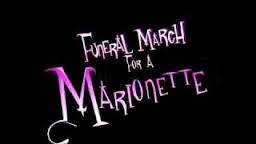• 1813 ~ Franz Schubert, age 12, finished his first symphony, The Symphony in D Major
More information about Schubert
• 1896 ~ Howard Hanson, American composer, educator and conductor
More information about Hanson
• 1909 ~ Josef Gingold, Russian-born American violinist
• 1936 ~ Charlie Daniels, American CMA Award-winning musician (1979), guitar, fiddle, singer with Charlie Daniels Band
• 1941 ~ Curtis Lee, Singer
• 1941 ~ Hank Marvin (Brian Rankin), Guitarist with The Shadows
• 1945 ~ Wayne Fontana (Glyn Ellis), Singer with The Mindbenders
• 1948 ~ Telma Hopkins, Singer with Dawn
• 1955 ~ A local kid from Lubbock, TX opened a concert for Marty Robbins and Elvis Presley. In the audience was a youngster by the name of Scott Davis. He would later become a superstar. We know him as Mac Davis. The kid who opened the concert was Buddy Holly.
• 1957 ~ After a show at the Pan Pacific Auditorium in Los Angeles, local police told Elvis Presley that he was not allowed to wiggle his hips onstage, the local press also ran headlines saying Elvis would have to clean up his act. The next night, the Los Angeles Vice Squad filmed his entire concert, to study his performance.
• 1961 ~ Brian Epstein, a record store owner in London, was asked by a customer for a copy of the record, My Bonnie, by a group known as The Silver Beatles. He didn’t have it in stock so he went to the Cavern Club to check out the group. He signed to manage them in a matter of days and renamed them The Beatles.
• 1965 ~ Earl Bostic, American jazz alto saxophonist and a pioneer of the post-war American rhythm and blues style, passed away
• 1980 ~ Annette Funicello, Cubby O’Brien, Tommy Cole, Sherry Alberoni and Dickie Dodd joined other Mouseketeers wearing black ears and white shirts on a sound stage in Burbank, CA. They were celebrating the 25th anniversary of the Mickey Mouse Club. The five special events each week were:
- Fun with Music Day on Monday
- Guest Star Day on Tuesday
- Anything Can Happen Day on Wednesday
- Circus Day on Thursday
- Talent Roundup Day on Friday
• 2003 ~ Oliver Sain, a saxophonist whose work was later recorded by artists from Loretta Lynn to Sean “P. Diddy” Combs, died of bone cancer. He was 71. Sain was a musician, songwriter and producer, known for his performances on songs like Bus Stop and Feel Like Dancing in the 1970s. He performed as recently as the previous night, his wife said. Sain’s work was sampled by Combs on his “No Way Out” CD and recorded by artists including the Allman Brothers Band, Chaka Khan and Ry Cooder. Sain grew up in Dundee, Miss., where he became known for his saxophone playing. He moved to St. Louis in 1959 and opened a recording studio in the city in the next decade.
• 2008 ~ A statue honoring AC/DC’s Bon Scott was unveiled at the Fremantle Fishing Boat Harbour in Western Australia. Although born in Scotland, Scott grew up in Fremantle after his family emigrated to Australia in 1952. Bon started out his newfound Australian life in Melbourne, his family lived in the suburb of Sunshine for 4 years before moving to Fremantle. Scott was born in 1946 died on 20th February 1980. He is buried in Fremantle Cemetery.
• 2018 ~ Richard GIll died at the age of 76. He was an Australian conductor of choral, orchestral and operatic works, who has been involved in music training and education.


